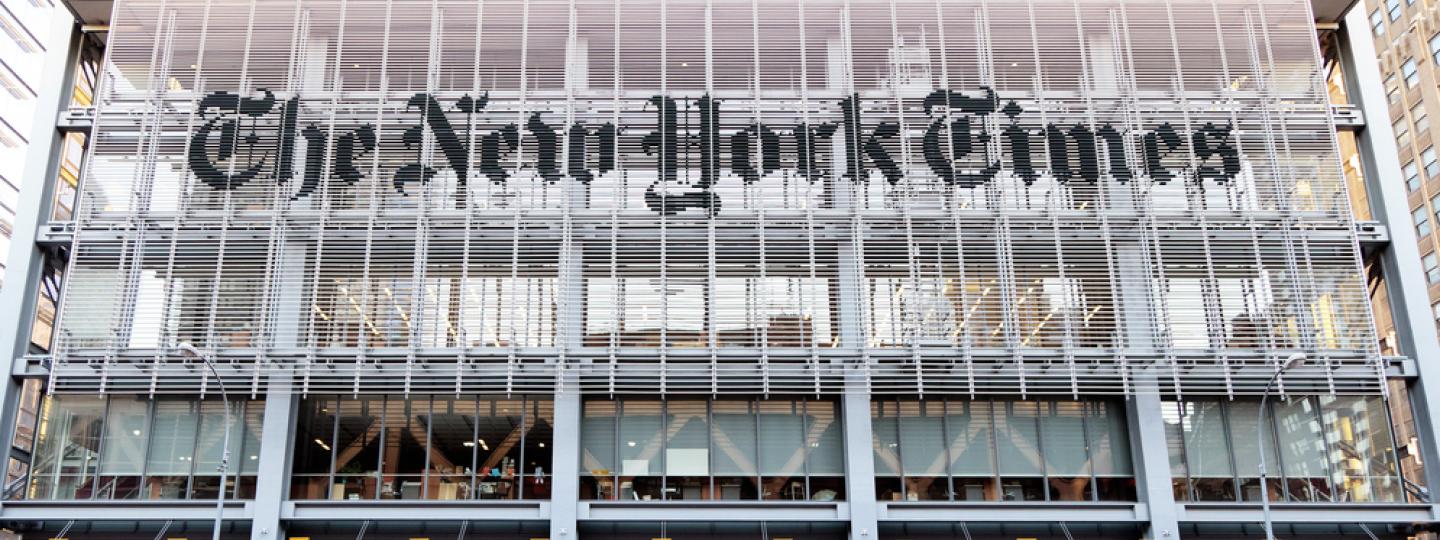The New York Times is stepping up its coverage of misinformation ahead of this fall’s midterm elections.
On Monday, the newspaper published a tip form where readers can send examples of potentially false or misleading content they find in their social media feeds. Examples could be a Facebook account spreading false information about a political candidate, a YouTube channel publishing doctored videos or a disinformation campaign being organized on Reddit.
It’s something that’s already a central part of the mandate for fact-checkers in the United States and elsewhere. But for The Times, the goal is to more proactively cover elections.
“It just feels that, from what we know that happened in 2016, misinformation was and continues to be a huge problem on social media,” said Rebecca Blumenstein, a deputy managing editor at The Times, in a phone interview. “We’ve been reporting aggressively on the election, trying to get the truth out of what’s happening in various campaigns, and you can’t leave out a player as big as Facebook.”
The Times isn’t the only mainstream news organization that’s launching a misinformation project ahead of the midterms.
Mother Jones is building a team of reporters to track misinformation and asking readers to help it identify false or misleading content online. BuzzFeed and ProPublica are partnering to collect political ads from readers who download a browser extension in the hope that they may analyze how ad targeting is being abused.
The Times weighed those initiatives when trying to decide what they could do. Blumenstein said the newspaper gathered several different teams, including the technology, political, investigative, digital and visual desks, to brainstorm the best ways to tackle misinformation. They settled on a tip line similar to the one the newspaper launched in December 2016 following the U.S. presidential election.
That page has received thousands of tips since launching — at least 100 per day, Blumenstein said. And so far, the midterm misinformation tip form has already received about 600 responses.
“What we hope to do in the coming days and weeks is target voters and use Facebook’s own technology and use paid promotion to reach voters,” she said. “There are some potentially interesting users where we could target (National Rifle Association) supporters — just ways to make sure we’re getting a bipartisan view.”
The tips will fit into the existing structure of the newsroom, Blumenstein said; reporters will pick up stories about misinformation as needed. For example: This week, Kevin Roose, a tech columnist at The Times, debunked five viral rumors about Christine Blasey Ford, who has accused Supreme Court justice nominee Brett Kavanaugh of sexual assault.
“We’re interested in almost everything. We’re interested in calling out misinformation,” Blumenstein said. “We were just thinking about the last elections, when we were covering all this after the fact. If we could come up with something real-time during the campaign, that would be so much more valuable in so many senses.”
She compared stories about misinformation to those about how much money political campaigns spend on TV advertising. While the latter are no longer very relevant, the former have taken their place.
“It’s become almost a meta story. It’s not just one reporter or lone group,” she said. “This is an updated way of explaining that.”







